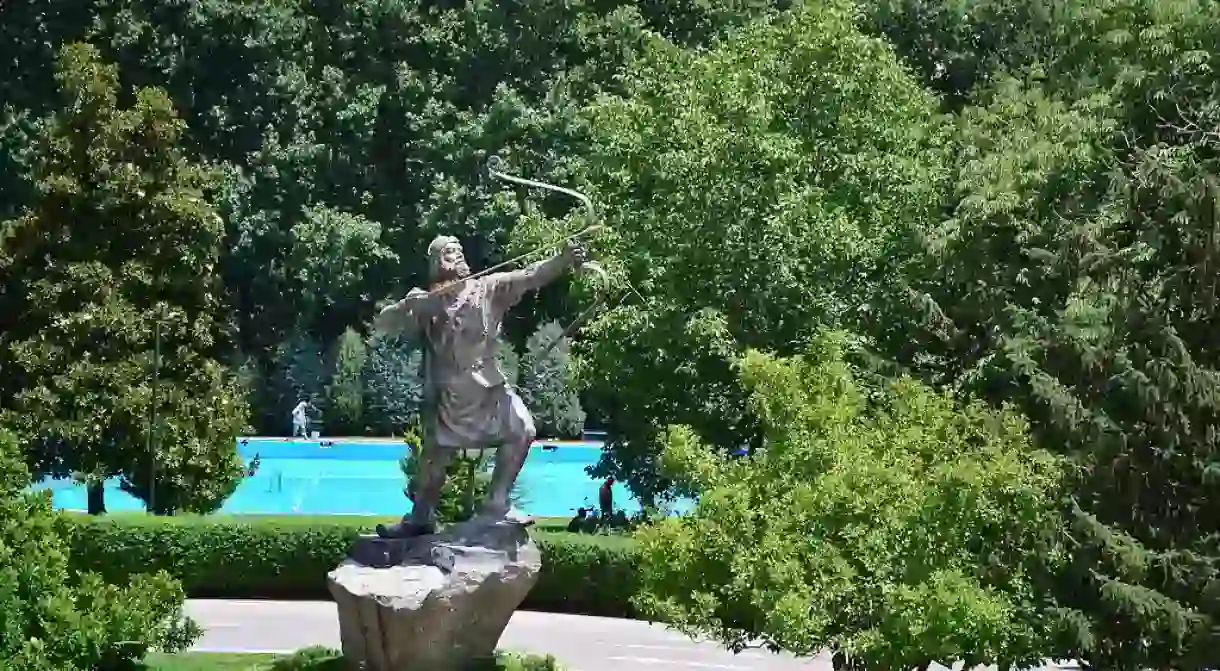A Tour of Iran's Statues and Sculptures

In an effort to beautify urban spaces in recent years, big cities like Tehran and Mashhad have installed a crop of sculptures by young artists and students around town, but this art form is nothing new. From the historic to the modern, here’s a tour of Iran’s most noteworthy statues and sculptures.
Nader Shah
Museum

Simorgh
The 25-meter high statue of Simorgh glistens under the sun in the sleepy town of Neyshabur, home to poet masters Khayyam and Attar of Nishapur. One of the most grandiose of its kind, the monument was designed by father-son duo Reza and Meysam Hadiani and represents the mythological phoenix from Ferdowsi’s epic poem, The Shahnameh. In the tale, Simorgh raises Zâl, an albino infant rejected by his parents. When Zâl’s father returns for him years later, Simorgh gives Zâl some of her feathers, telling him to burn one if he ever needs help, and that she will materialize in the guise of a black cloud. Zâl later marries, and when his wife Rudâbeh falls mortally ill during labor, he burns a feather, and the phoenix appears, telling him to cut the baby from her belly. Following her advice, Rudâbeh is saved, and legendary Persian hero Rostam is born. Simorgh also plays a role in Attar’s The Conference of the Birds.

Darband mountaineer
At 1,700 meters above sea level, Darband in northern Tehran is a popular spot for mountaineers to start their hike to reach the central Alborz mountains. It’s fitting, then, that the most famous landmark in this area is of a mountaineer. In fact, this statue, located in Sarband Square, is typically the official meeting place for friends gathering to go for a vigorous early-morning hike or a casual stroll, grabbing some mouth-watering kabob or sour fruit leather along the way.

Reza Shah’s legs and Arash the Archer

Tehran Museum of Contemporary Art (TMoCA)
Displayed alongside the works of national Iranian painters at the TMoCA are those of Western painters such as Monet, Warhol, Pollock, Picasso, and Van Gogh – and just as exciting are the sculptures in the museum’s garden. René Magritte’s The Healer and Alberto Giacometti’s Standing Woman and Walking Man are among the highlights that adorn the grounds.

Ferdowsi
Mosque

Laleh Park: Al Biruni and Omar Khayyám
Tehran’s Laleh Park is replete with statues of notable figures in Persian history, but perhaps two of the most outstanding are those of Al Biruni and Omar Khayyám. Considered one of the greatest medieval Islamic scholars, Al Biruni is known for his contributions in the fields of astronomy, mathematics, physics, and history. The sculpture of celebrated poet Khayyám is another masterpiece by Hassan Sadighi.

Shapur I
Located in Shapur Cave in the Zagros Mountains stands the towering figure of Shapur I, the second king of the Sasanian Empire. The unknown sculptor is said to have chiseled this statue from a stalagmite. A fall attributed to an earthquake left it almost limbless, but it has since been raised onto concrete pillars, giving it the appearance of having legs, but no arms.

Bronze statues of Amir Chaghmagh Square
Museum














